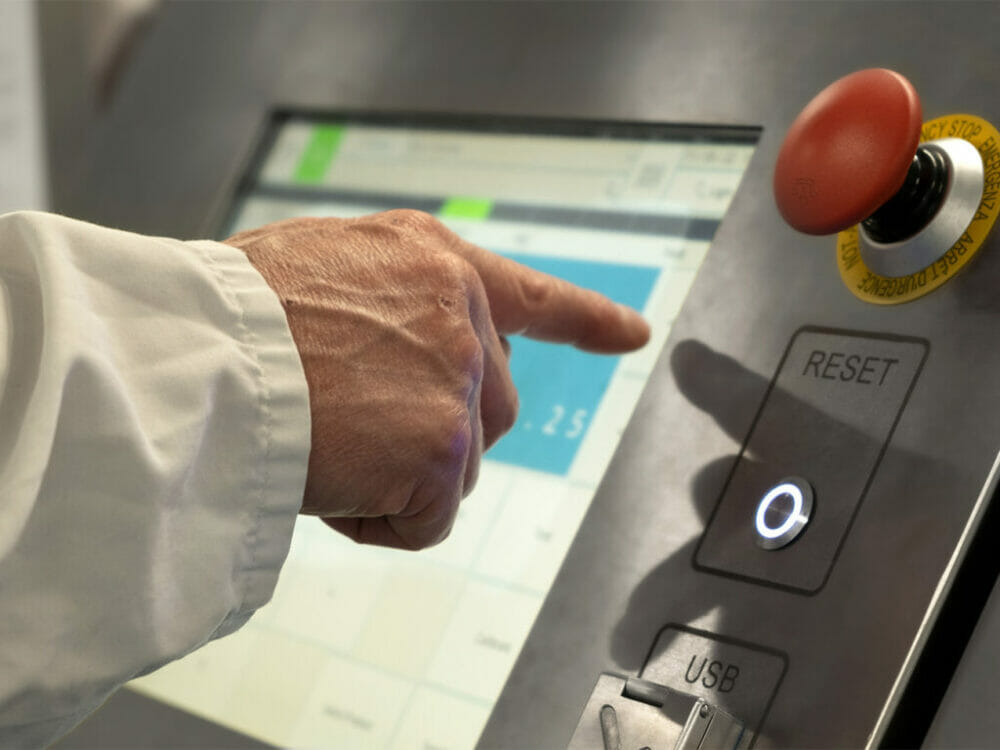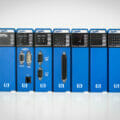Metal detection systems continue to be the mainstay of preventing contaminants entering the food production chain. As more and more advanced equipment enters the market, food safety specialist Fortress Technology has engineered a retailer-spec conveyor system that reassuringly ticks all the due diligence requirements for all product and application requirements.
Fully compliant with British Retail Consortium, HACCP and GFSI food safety standards, the Fortress all-in-one Retail-Spec Conveyor comprises numerous future-proof features. Among them ARM microprocessing power and state-of-the-art infeed, outfeed and reject sensors.
As many Fortress customers testify, purchasing a conveyor system with fully integrated technology, including retailer Codes of Practice (COP), is a failsafe way of ensuring that the metal detector will function at peak performance levels and meet retailers current and future stringent inspection performance requirements.
Sticking to its Simple to Use; Smart under the hood engineering principles, the Fortress Retail Spec Conveyor is equivocally less about conveyor belt size or configuration, but more linked to the placement of smart sensors confirms sales manager Jaison Anand.


Brains over brawn
Describing the sensors as the brains of the retailer-ready metal detector, Jaison expands: “In our experience, food processors can feel overwhelmed by the breadth of inspection technology choices. Built to M&S Food standards, the rationale for creating our Retailer Spec Conveyor was to address this minefield and provide customers with future-proof functionality.” Fortress intentionally uses M&S food safety standards as the benchmark, as they are the most stringent, affirms Jaison.
Machine sensors feature at every step of the inspection process. As packs travel into a Fortress metal detector, the infeed sensor registers its presence. If there’s no contamination trigger, the outfeed sensor identifies the pack leaving the metal detector, while the reject sensor will track the placement of potentially contaminated product into the BRC-approved bins. “It’s a seamless and failsafe process that uses our Contact software to register every sensor activity, fault fix and signal in parallel,” confirms Jaison.

All these simultaneous activities are only possible with ARM Processing. “The true benefit of ARM Processing comes from being able to run multiple inspection processes within milli-seconds of each other, without missing a beat. This is done with the highest precision, while also capturing and storing valuable processing data for traceability.”
For nut specialist Trigon Snacks, opting for a Fortress Stealth supermarket-spec conveyor metal detector fulfilled the company’s every inspection requirement. Retailer COPs specified that as ‘naked nuts’ the company’s honey-coated range must be inspected for metal contaminants prior to own-label packaging. Additionally, Trigon required a customised retailer specification metal detector that was sensitive enough to adapt to the fine oil and sugar tolerances.
Keeping to the code
Retailer COP revisions, although infrequent, can be a major headache for food processors and machinery manufacturers alike. To navigate these future unknowns, Fortress offers a simple and cost effective route to adhere to evolving compliance and fault warning risks.
In order to minimise business interruption, software upgrades can usually be performed as part of a validation or routine maintenance visit. From a continuity perspective, the menu and functional set up will typically look and feel exactly the same.
For smarter machine monitoring and to support supply-chain traceability, the company’s suite of Contact software offers simple yet effective data capture. Now including Contact 4.0 for remote monitoring of multiple metal detectors within the network, this software helps manufacturers to maintain HACCP compliance and traceable quality assurance recordkeeping. Features include event logging, data collection and on-demand reports. All this data is collated from information captured by the three machine sensors. Reports can be downloaded and exported via the USB located next to the HMI.
Comparing the costs of purchasing a new machine versus a Fortress upgrade, Jaison remarks that it’s a no brainer. “You are typically looking at several hundred rather than tens of thousands of pounds buying new inspection kit. Most importantly for fast-paced food processing environments, compliance can be instant.”
Jaison highlights that realistically changes to COPs focus on fail safes and addressing any machine misuse loopholes. There haven’t been any significant revisions assures Jaison for nearly seven years. “Nevertheless, we never take our eye off the ball. As soon as a new quality control or COP feature is added, Fortress R&D can be trusted to be on the upgrade case.”








